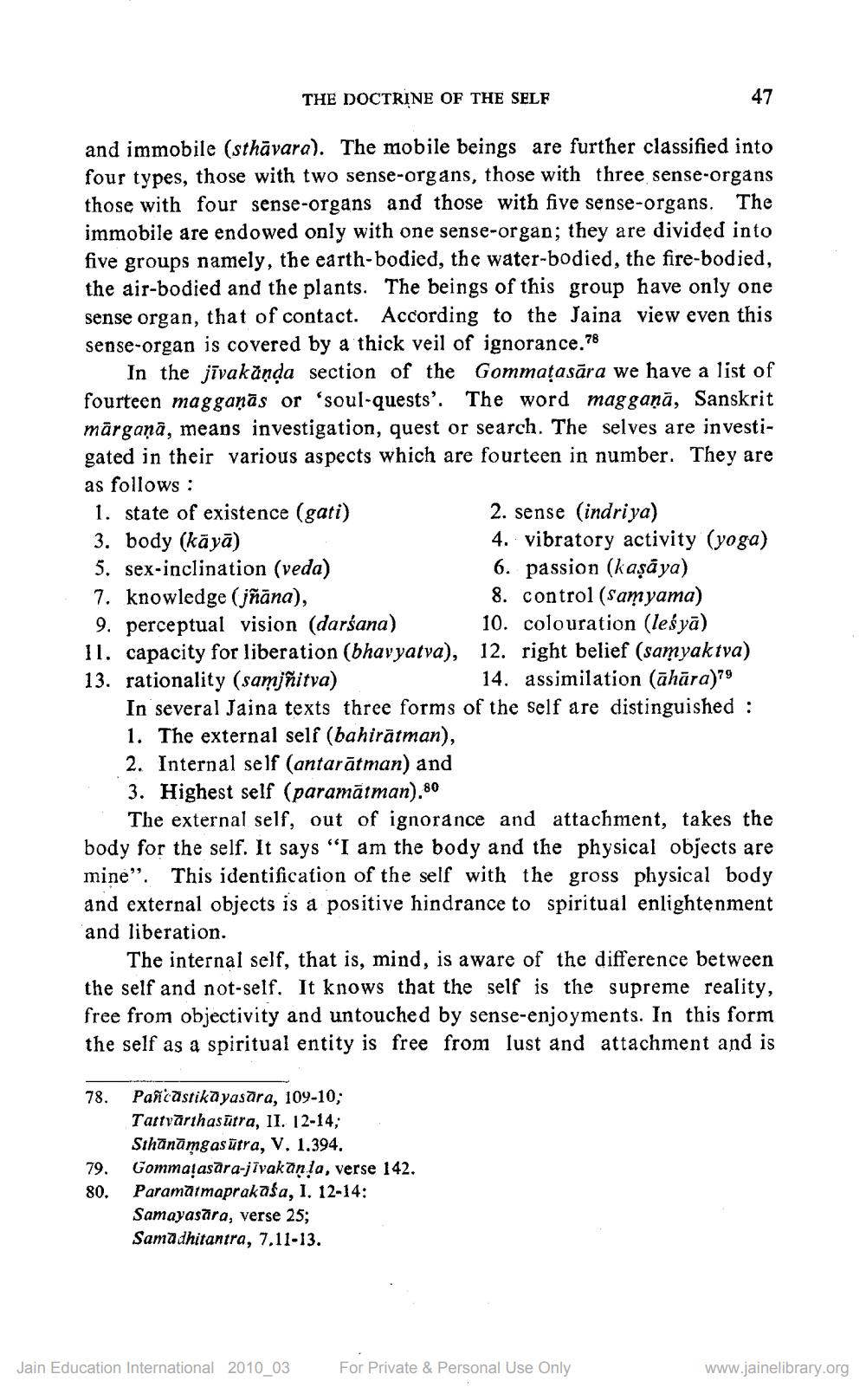________________
and immobile (sthavara). The mobile beings are further classified into four types, those with two sense-organs, those with three sense-organs those with four sense-organs and those with five sense-organs. The immobile are endowed only with one sense-organ; they are divided into five groups namely, the earth-bodied, the water-bodied, the fire-bodied, the air-bodied and the plants. The beings of this group have only one sense organ, that of contact. According to the Jaina view even this sense-organ is covered by a thick veil of ignorance.78
In the jivakaṇḍa section of the Gommaṭasara we have a list of fourteen maggaṇās or 'soul-quests'. The word maggaṇā, Sanskrit märgaṇā, means investigation, quest or search. The selves are investigated in their various aspects which are fourteen in number. They are as follows:
1. state of existence (gati)
3. body (kāyā)
5. sex-inclination (veda)
THE DOCTRINE OF THE SELF
78.
7. knowledge (jñāna),
9. perceptual vision (darśana)
11. capacity for liberation (bhavyatva),
12. right belief (samyaktva) 14. assimilation (āhāra)79
13. rationality (samjñitva)
In several Jaina texts three forms of the self are distinguished :
1. The external self (bahirätman),
2. Internal self (antaratman) and
3. Highest self (paramātman),80
The external self, out of ignorance and attachment, takes the body for the self. It says "I am the body and the physical objects are mine". This identification of the self with the gross physical body and external objects is a positive hindrance to spiritual enlightenment and liberation.
79.
80.
The internal self, that is, mind, is aware of the difference between the self and not-self. It knows that the self is the supreme reality, free from objectivity and untouched by sense-enjoyments. In this form the self as a spiritual entity is free from lust and attachment and is
47
Pañcastikayasara, 109-10; Tattvarthasutra, II. 12-14; Sthanamgasutra, V. 1.394. Gommaṇasāra-jīvakāṇļa, verse 142. Paramatmaprakasa, I. 12-14:
Samayasara, verse 25; Samadhitantra, 7.11-13.
Jain Education International 2010_03
2. sense (indriya)
4. vibratory activity (yoga) 6. passion (kaṣāya)
8. control (samyama)
10. colouration (lesya)
For Private & Personal Use Only
www.jainelibrary.org




